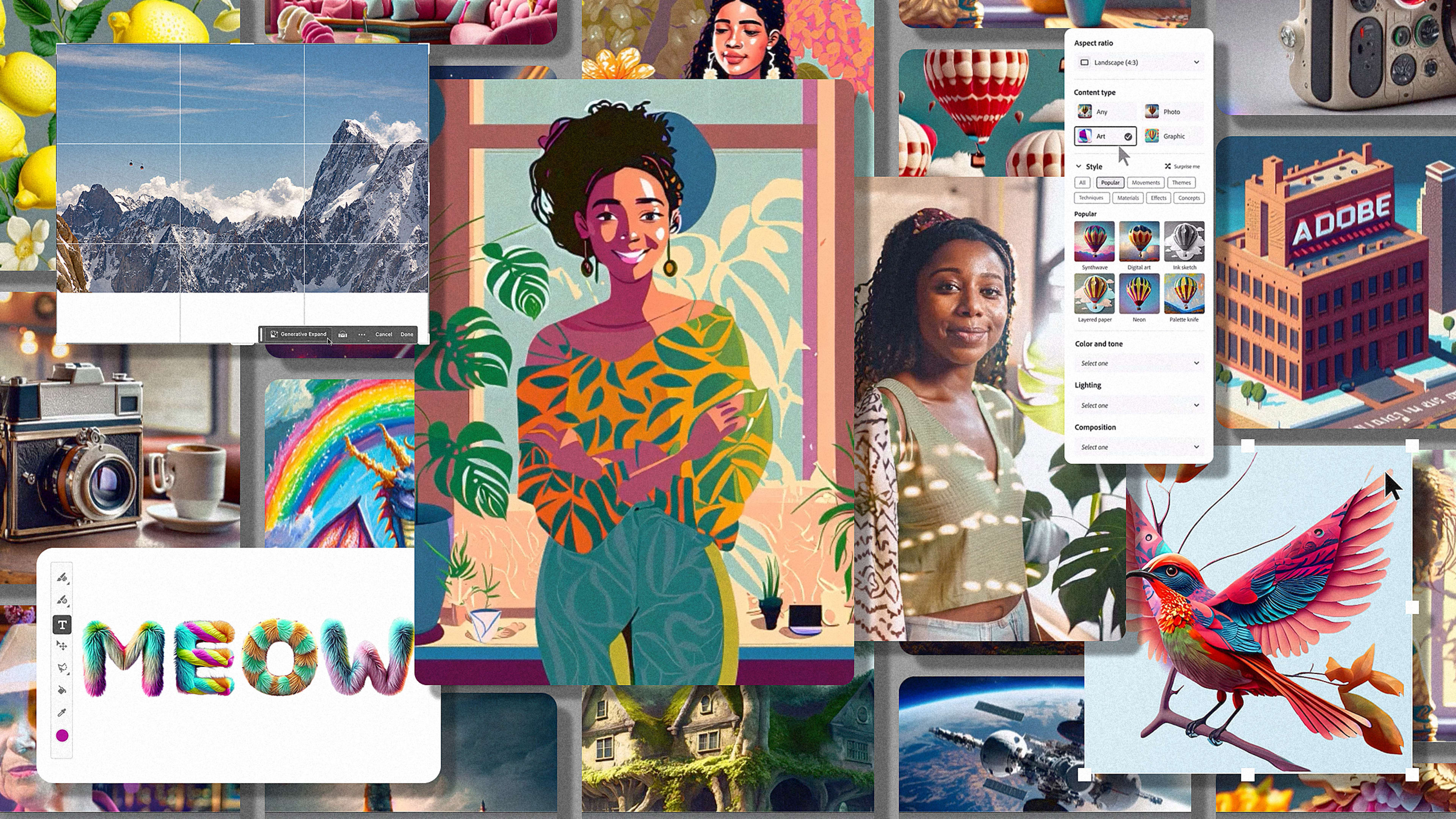The year was 2022—a lifetime ago.
OpenAI, Midjourney, and Stability AI were going viral in an endless stream of posts shared on social media. The world dropped its collective jaw at the ability to type a few words and transform them into realistic photos, product renders, and rich illustrations.
And Adobe, the most famous media-editing company in the world, was oddly, even awkwardly quiet. For nearly a year.
It wasn’t until March of 2023 that Adobe revealed its own take on generative AI—a public beta site called Firefly, which featured a small collection of AI experiments. Firefly allows users to erase an area of a picture and “generative fill” it with a newly imagined image, and create a new typeface dripping with slime, peanut butter, or any other idea you could think of. The public response was measured. Some celebrated the intuitive interface for AI, while others quickly pointed out the limitations and flaws of Adobe’s proprietary AI models. Considering the remarkable speed with which people embraced platforms like ChatGPT (which had 100 million users in its first two months), it was unclear if Firefly was too little, too late. Especially given that, in the same month Adobe’s beta debuted, its competitor, Canva, was already integrating several generative AI tools into its core app.
Recognize your brand’s excellence by applying to this year’s Brands That Matter Awards before the final deadline, June 7.
Sign up for Brands That Matter notifications here.
